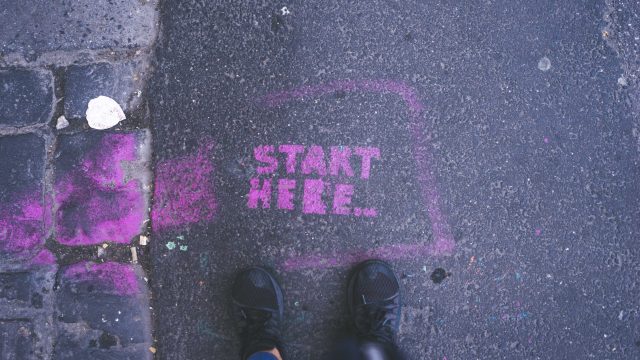Whether you have your own products to sell, are looking to resell products or a mix of both, getting access to the world’s largest marketplace has never been easier. Stats show that Amazon sells more than 12 million products which, when you factor in Amazon Marketplace sellers, the number of products rises to over 350 million.

All that you have to do to succeed is to meet the high expectations that customers are going to have from Amazon. Packing your orders and dispatching them as soon as possible, being on the ball with customer services, and offering excellent value for money. That’s how Amazon became so successful, and if you’re going to follow anyone’s example, Amazon is a great starting point.
There are 2.5 million active Amazon sellers, ranging from those who are supplementing their household income to those manufacturing products with teams of people operating internationally. These are people just like you, using the power of Amazon to give them the money to pay for their holidays or set up international ecommerce businesses with teams of people working for them.
The beauty of selling on Amazon is, it can be what you want it to be. No experience needed, just use the steps below to get started.
1. Set up an Amazon Account
Becoming an official Amazon seller is really very simple. Amazon provides lots of help and support within their recently updated portal. All you will need to create an Amazon seller account is to have the following handy when you sign up:
- Business email address or Amazon customer account
- Chargeable credit card
- Government issued / official ID (identity verification protects sellers and customers)
- Tax information
- Phone number
- A bank account where Amazon can send you proceeds from your sales
Waiting for that first sale is very exciting, when it occurs Amazon will deposit payments directly into your bank account, and will notify you that your payment has been sent, if you haven’t already spotted it!
PRO TIP: Don’t forget to download the Amazon seller app, so you can keep track of orders or manage customer queries on the go.
You can choose from two different types of accounts to set up; Individual or Professional:
Individual Seller is ideal if you are looking to sell less than 40 items a month, providing they fall within certain product categories. There is also a fee of $0.99 per item sold on top of your other seller fees. There is however no monthly subscription and is perfect if you are planning to start out small.
Professional Seller gives you access to a much larger range of product categories, including giving you the option to unlock restricted categories. You can also sell more than 40 items a month (no upper restriction given) and use the advertising features to ensure your product listing gets seen.
If you are planning to use arbitrage to resell products, then SourceMogul can help save a huge amount of time by identifying profitable products and calculating profit after fees.
2. Source Products to Sell
In our opinion, this is the most important stage of all.
Products are sourced in many different ways by Amazon Sellers. You may already have come across the terms; Arbitrage, Wholesale or Private Label. It is likely that, unless you already have a product to sell, you will probably start your Amazon journey with Arbitrage.
Arbitrage is seen as an ideal starting point where you find products from stores which you can resell on Amazon for a profit. Retail arbitrage is usually defined as the process of visiting stores to find products, whereas online arbitrage is just the same idea, but you buy products online, from the convenience of your own home.
Wholesale arbitrage involves buying products directly from wholesalers to resell on Amazon. This is a great option if you are looking to scale your arbitrage business, as you can access larger volumes of often cheaper products. SourceMogul can also help you identify the product gems from large lists of wholesale files, saving more time and money.
Private label is where you find products that are selling well on Amazon, then find a manufacturer who can make the product, often in bulk, at a cheaper price. The manufacturer will then add your logo and business information to make it unique to your business. Finding a product to sell under your own brand at scale, takes a lot of product and market research to ensure you don’t end up wasting your money.
PRO TIP: Make the most of your 7 day free trial with SourceMogul to see how easy it is to find profitable arbitrage products to sell. Just select your store or category and adjust the filters to meet your budget and profit margin and let the tool take care of the hard work for you.
Factors to consider other than simply profit margin will determine the success of your first shipment. How well the item sells for example will ensure you don’t end up with stock sitting in a warehouse getting dusty. Amazon provides a Best Seller Rank to help demonstrate a products performance. For those new to Amazon arbitrage terminology, SourceMogul’s average sales per month estimation will make life much easier.
3. Choose Your Fulfillment Method
Fulfillment refers to the responsibilities of storing, picking, packing, and shipping products to customers. The two options are Fulfillment by Amazon and Fulfillment by Merchant:
Fulfilled by Amazon (FBA): Using the Amazon FBA business model, you send your products to be stored in an Amazon fulfillment center, and Amazon will then pick, pack, and ship your products upon order. It is simply defined by Amazon’s as: “You sell it. We ship it.”. It’s very easy for those starting out to use Amazon FBA as a lot of the additional complication is taken care of. It’s important to know however that additional fees are involved, however the majority of fee calculators will factor this in for you.
Fulfilled by Merchant (FBM): Using this method, you list your products on Amazon and then you are responsible for handling all aspects of storage and order fulfillment. You are also responsible for any late, missing, or damaged packages as well as customer returns. It is worth noting that you are also not automatically eligible for listing under the Prime.
4. Create Your Amazon Listing
If you’ve sold on sites like eBay before you’ll know how tedious the listing process can be, writing product descriptions and finding the right lighting to best show off your items. On Amazon you don’t need to worry about any of that. In most cases, if you want to list a product for sale, all you have to do is find the product on Amazon and click “Sell Yours”. Once you’ve filled in a few details, you’ll be listed alongside all the other sellers for that product, and ready to get some customers.
To start selling products on Amazon you need to add the products to your Amazon ‘Inventory’ list. This is available in your seller account. You have a couple of options here, either match your product to an existing product listing or, if your product is not already listed, you can create a new listing.
To find the correct listing you need to search for it via the “Add a Product” page. You can find your product using the search bar. Ideally you want to use the barcode (or ISBN for books) however you can also search for the product by the product’s name. If you’re happy you’ve found your item you can click on the Sell this product button to start listing your item. If you are unable to find the product through the search and it does not already have a listing on Amazon you will need to “Create a new product”.
Creating your listing requires you to have a little bit more information, so before you start make sure you have the product identifier, offer details, product details, keywords and search terms. There is lots of supportive information available to help you create a new listing.
PRO TIP: Its also useful to have a look and see how other similar products are listed to give you an idea.
5. Package & Ship Your Product
You now need to get your products to your end users. If you are using Amazon’s FBA service that means getting your shipment safely to Amazon fulfillment centers.
There are a number of options for creating your shipment depending on the size of your inventory. When you are starting out you may have a relatively first small order and therefore the “Send Inventory to Amazon” workflow is ideal.
Once you have created your shipment, Amazon will specify which products it would like in which shipment and the details of the Amazon fulfilment centre to send it to. You will also need to add the relevant labels or stickers to cover any existing barcodes to get your items ready for resale.
PRO TIP: Do not print labels on ordinary paper and tape them to products as they will not be scannable. Pre-cut sticker sheets in the correct size are available from Amazon and will save you time cutting out labels.
It is vital that your products arrive at Amazon’s warehouse in perfect condition, so take the time to get the packaging right. It is okay to reuse boxes to ship to Amazon FBA, as long as they are not too damaged and sturdy enough to withstand delivery.
If you are shipping boxes you can select who will be shipping your boxes. If you choose the “Amazon- partnered Carrier (UPS)” you can pay for the delivery through your Amazon account and you receive a discounted rate which can save you a lot of money.
6. Optimise your listing and grow sales
Amazon’s vision is to be earth’s most customer-centric company, and this is worth remembering throughout your Amazon journey. The art and science of maximising your product listing and getting the all important buy box are simply about showing you put the customer first. Selling for a fair price and dealing with customer enquiries promptly will ensure you build your reputation as a first rate seller.
As long as you deliver the principles of Amazon’s customer-centric vision to set a strong foundation for your business you can start to experiment with the many other tools available to optimise the performance of your products.
If you want to reduce the time it takes to source profitable products for Amazon resale – get started today with a 7 day free trial and find out how SourceMogul can help you to grow a protibale business!
More strategy
-

Top tips for success from a new Amazon seller
We've compiled a list of the top tips for new sellers, gathered from a…
-

How to get ungated on Amazon – your guide to Amazon restricted categories
If you’re looking to expand your online arbitrage business, you might find yourself tempted…
-

How to prepare for Amazon Q4 trading
Every year the holiday season seems to come around a little earlier. As an…
-

What are brand restrictions?
This guide will help you to understand Amazon brand restrictions. SourceMogul provides a useful…




